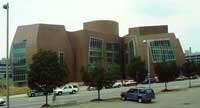Installing awstats is easy in OpenSUSE through Yast. Unfortunately only half the job is done if you wish to activate it for a certain virtual host.
Firstly in the vhost configuration file add the following parameters:
Alias /awstatsicons /srv/www/icons/awstats
ScriptAlias /usage /srv/www/cgi-bin
<Directory "/srv/www/cgi-bin">
AllowOverride None
Options +ExecCGI -Includes
Order allow,deny
Allow from all
</Directory>
<Directory "/srv/www/icons/awstats">
AllowOverride None
Options None
Order allow,deny
Allow from all
</Directory>


